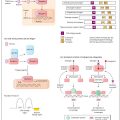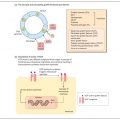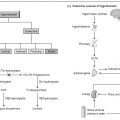Delayed puberty is one of the most common referrals to paediatric and adult endocrine clinics. It is defined as absence of breast development in a girl by 13.5 years or failure of testicular growth to >4 ml by 14 years in a boy. Constitutional delay of puberty is by far the most common diagnosis in boys, accounting for around 80% of cases, whereas in girls delayed puberty is more likely to reflect serious underlying pathology. Clinical assessment of boys with delayed puberty should be aimed towards identifying patients with individual underlying pathology. If constitutional delay is confirmed then treatment is conservative to observe any spontaneous development over 6–8 months. If no pubertal change is evident then treatment with low-dose testosterone will induce hypothalamic-pituitary activity and trigger the onset of puberty. In girls with delayed puberty and primary amenorrhoea a specific cause is more usually found. Clinical examination will establish signs of Turner syndrome and subsequent investigations must include karyotype analysis. Treatment is specific for the underlying cause.
Puberty describes a series of events associated with a growth spurt and culminating in the acquisition of sexual maturity and reproductive function. The phenotypic changes of puberty follow a set pattern (Fig. 24a
Stay updated, free articles. Join our Telegram channel

Full access? Get Clinical Tree








